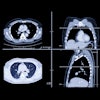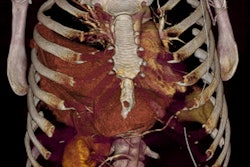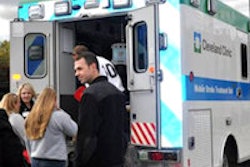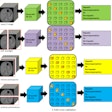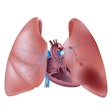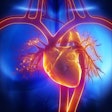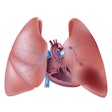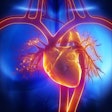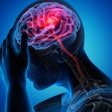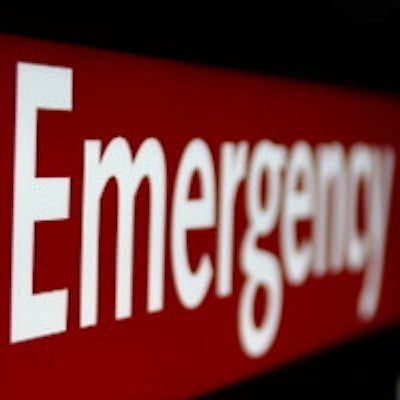
Substantial time can be saved by siting CT scanners in the emergency department (ED) rather than transporting patients to the radiology department hundreds of meters away, according to a new study in the Journal of the American College of Radiology.
Investigators analyzed about 1,700 nonemergent abdominothoracic scans from two hospitals associated with the same academic institution: At one hospital, a CT scanner was located in the ED, while at the other, the scanner was in the radiology department 300 meters from the ED. The group found that CT scans were completed approximately 16 minutes faster in the ED that had the scanner.
"Having imaging equipment close to where it is most needed is valuable in providing timely patient care; this is what we have tried to show in this study," Dr. Ania Kielar, from Ottawa Hospital Research Institute, told AuntMinnie.com by email.
An integral part of the ED
CT has become an integral component of patient management in the emergency department, Kielar wrote, along with co-author Wilfred Dang and colleagues. Previous research in trauma settings has shown that the time between requesting and completing CT exams can be reduced if patient transfers are reduced (JACR, January 29, 2015).
For patients with nontraumatic abdominal and thoracic symptoms upon arrival at the emergency department, the study aimed to determine if having a CT scanner directly located in the ED was associated with the following:
- Decreased time between receipt of the imaging requisition and completion of the scan
- Decreased time between scan initiation and preliminary interpretation
- Decreased time for the entire scan process, from receipt of initial CT requisition to final patient disposition
In previous studies, using portable CT scanners reduced the time between imaging request and completion by as much as 15 minutes, and distance of the CT scanner to the ED has been cited as an important variable.
For the current study, data came from a hospital-based tertiary data center that supplied the two ED hospital campuses. The study team analyzed 1,696 records acquired from both emergency departments during a three-month period in 2012.
One hospital had a CT scanner in the emergency department, while the other hospital had a scanner in the radiology department 300 meters from the ED on the same floor -- a little over two minutes' walking time when transporting a patient, according to the authors. Staffing levels were comparable at the sites.
"All radiology staff members who do ED work are scheduled at both EDs, as well as in their own subspecialties, which are represented at both campuses," the authors wrote. "During the evening, however, only one staff radiologist reports for both sites, with a radiology resident sited at each hospital ED."
The results showed reductions in scanning time favoring the hospital with the ED-based scanner, Kielar and colleagues found.
| Time savings from CT scanner located in ED | ||
| Time parameters | Overall time savings | p-value |
| Order requisition to scan initiation | 16 minutes | < 0.0001 |
| Scan initiation to preliminary report | 15 minutes | < 0.0001 |
| CT requisition to final patient disposition | 19 minutes | < 0.04 |
Scans ordered for hyperacute and acute conditions did not differ significantly between the hospitals with regard to time of request to scan initiation, or time of request to preliminary report. However, times required for the final disposition for acute and hyperacute patients were lower in the ED with a CT scanner (46.5 minutes and 159 minutes faster, respectively).
Significant differences in interpretation times as a function of radiology training levels were seen between the two hospitals, according to the authors. For example, time from scan initiation to preliminary report by staff radiologists and fifth-year residents was less at the institution with the ED CT scanner (p = 0.04 and p = 0.0001, respectively). On the other hand, interpretation times between the institutions for other radiology training levels were similar.
Overall, all three average time periods studied were significantly shorter in the hospital with the ED CT scanner during three different work shifts.
Effect of findings
The researchers believe the findings could broadly affect public health policy regarding equipment siting.
"These findings have particular import for ED programs that have public reporting of ED waiting times, pay-for-results incentives, and competitive funding based on patient outcomes and time-based targets," they wrote.
For example, there are payment systems in Australia and the U.K. where the goal is to arrive at a patient disposition time of four hours or less, they added.
As for study limitations, a difference of almost three percentage points in the frequency of oral contrast use between centers (6.9% at the ED with the CT scanner; 4.2% at the ED without) could have confounded the results, though contrast use was rare, according to the group.
Also, the hospital without the ED CT scanner had one fewer scanner available, and the institution performed almost 3,000 fewer scans. It had to scan all patients, including inpatients and intensive care and trauma patients, on the same two scanners, which can lead to delays, they wrote.
"This is a limitation of the study in that the hospital with fewer machines could have heavier use of those two machines, leading to delays," Kielar told AuntMinnie.com. "However, we did not find a large difference in the number of people scanned per machine per day; therefore, we felt that the effect was small."
For future research, the group is thinking of assessing exam appropriateness in the ED and whether imaging can be overused if it's right at one's fingertips, Kielar said.
Additional research could also include evaluating the importance of communication between the ED physician and radiologist at the time imaging is requested. Much emphasis has been placed on communication between the radiologist and the physician in terms of getting the final diagnosis to the correct person in a timely manner. However, few studies have focused on the importance of having clinicians provide a clear and accurate history to radiologists.
